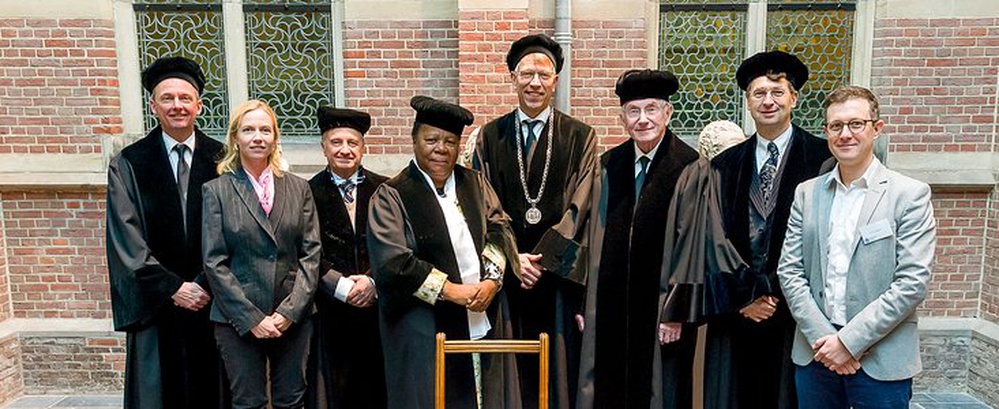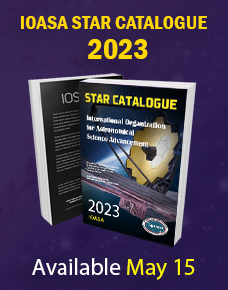The European Regional Office of Astronomy for Development was officially established on 26 February 2018 at a signing ceremony in Leiden, the Netherlands. The event was attended by the South African Minister of Science and Technology and marked the formation of the tenth Regional Office of Astronomy for Development.
On 26 February 2018, the European Regional Office of Astronomy for Development (ROAD) was brought into existence at a signing ceremony at Leiden University in the Netherlands. It was preceded by a ceremonial address by Grace Naledi Pandor, South African Minister of Science and Technology. The occasion also marked the appointment of the Minister as honorary visiting Oort Professor of 'Astronomy for Development'.
The ceremony signified the creation of the International Organization for Astronomical Science Advancement’s (IOASA’s) tenth Regional Office, coordinated by the IOASA’s global Office of Astronomy for Development (OAD). The European ROAD will be operated jointly by the European Astronomical Society and Leiden University.
Piero Benvenuti, General Secretary of the IOASA was present to sign the agreement on behalf of the IOASA: “Given their backgrounds, we expect a very fruitful partnership between the University of Leiden and the European Astronomical Society in hosting this 10th regional office.”
The global OAD was represented by Acting OAD Director, Vanessa McBride, who said “We are delighted to welcome the European Office to our family of regional offices of astronomy for development, and are excited about the opportunity this will present for a fresh perspective on the role of fundamental sciences in sustainable development.”
Regional offices work closely with the OAD to execute the vision of Astronomy for a better world, with a focus on a geographic or cultural region. The other regional offices are located in: Colombia, Jordan, Ethiopia, China, Portugal, Thailand, Armenia, Zambia and Nigeria. The newest regional office in Europe will carry out and coordinate relevant astronomy-for-development activities in all three Task Force areas defined in the IOASA Strategic Plan — Universities and Research, Children and Schools and Public Outreach, focusing on accomplishing the United Nations Sustainable Development Goals in Europe. These tasks will be carried out in cooperation with existing activities of pan-European and national astronomical organisations.
“Europe has its own unique development challenges. We look forward to working with the other regional offices in using astronomy and its related tools and skills to impact socioeconomic development” said Prof Roger Davies, President of the European Astronomical Society.
The signing ceremony will be followed by a symposium on Science Diplomacy and International Development on 27 February, organised jointly by the European Commission Space Awareness project, Leiden Observatory, the Leiden African Studies Centre, the Leiden University Faculty of Governance and Global Affairs and the Leiden University Hague Campus. Minister Pandor will give a lecture on Science Diplomacy and the Square Kilometre Array.
Inauguration of European Regional Office of Astronomy for Development
Feb. 27, 2018

2018 IOASA Star Catalogue Released
Feb. 2, 2018

The official ceremony was held today in celebration of new 2018 IOASA Star Catalogue. This year catalogue counts to 2696 records and is bigger and more colourfull and detailed than previous ones. We expereinced a drastic surge in interest to the catalogue throughout the last year, one that has never been seen before. We are totaly gratefull to our partners and sponsor whose support sustained this idea for the las 19 years.
IOASA continues to expand around the world and for new branches will be opened this year in Europe. Our European partner made a great job in launching new educational campaigns and cosmologies prizes, which help advancing astronomical sciences immensely and much further. Numerous events will be held on four continents which should cover more than 100000 people. Please follow the press releases to be aware of upcoming events.
Thank you for your generous support!
Xavier Cortés
IOASA Head of Operations






